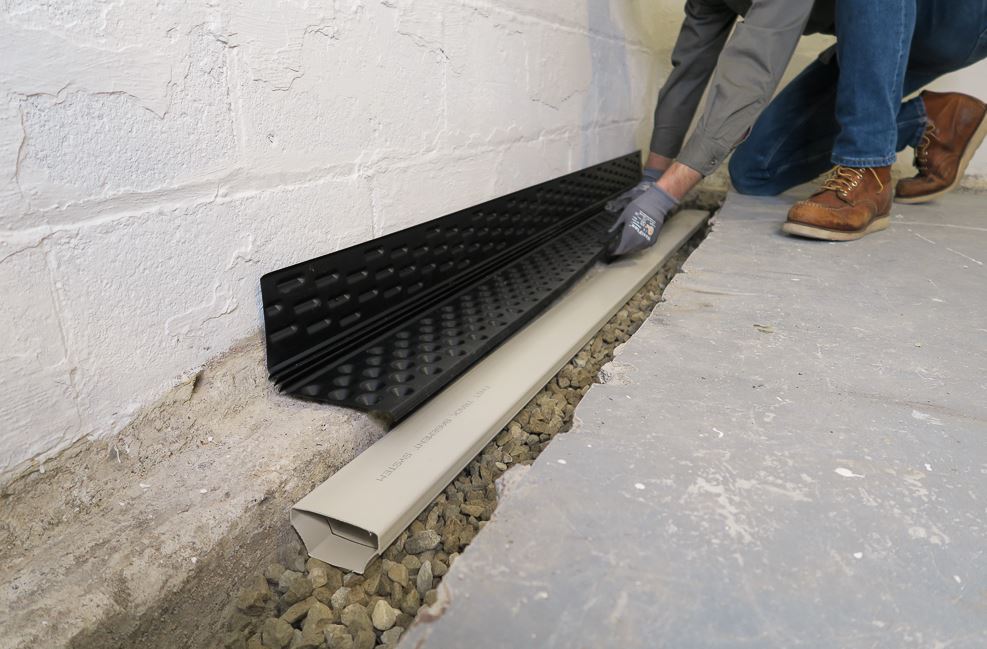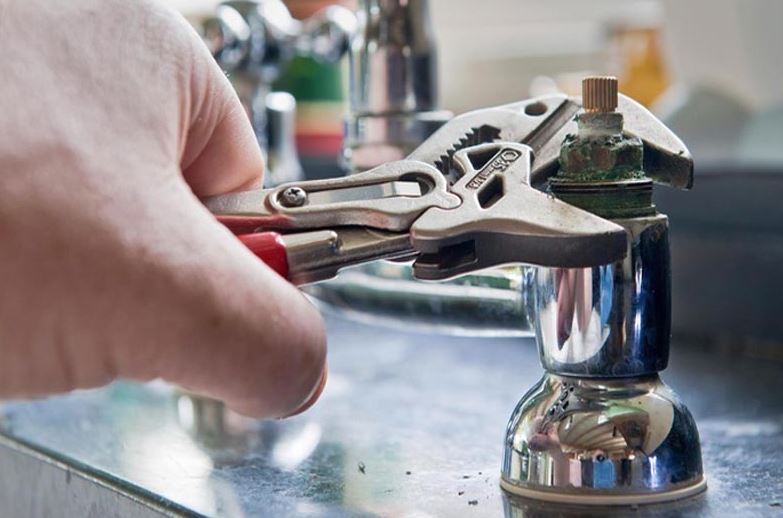Budget-Friendly Basement Waterproofing Solutions for Homeowners
Are you experiencing damp problems in your basement? If so, it may be time to consider basement waterproofing.
Discover the importance of basement waterproofing, the consequences of neglecting it, and the various solutions available.
Select the appropriate solution for your home, from external waterproofing to internal options and drainage system installations.
Stay tuned for cost-effective advice to keep your basement dry and secure.

What Is Basement Waterproofing?
Basement waterproofing is the process of applying solutions to prevent dampness, leakage, and seepage in the basement of a property.
Implementing proper basement waterproofing safeguards your home against water damage and mold growth, preserving its structural integrity and ensuring the well-being of its inhabitants.
Various waterproofing solutions are available to homeowners, including interior sealants, exterior waterproof coatings, drainage systems, and sump pumps. These solutions can be tailored to suit different basement conditions and budgets.
Consistent upkeep, including the inspection and repair of foundation cracks, ensuring proper drainage systems, and installing gutter extensions, is essential for safeguarding your basement against water-related issues.
Why Is Basement Waterproofing Important?
Basement waterproofing is essential for homeowners to maintain a safe and healthy living environment by using quality materials and affordable solutions.
By investing in high-quality waterproofing materials and solutions, homeowners can prevent potential water damage, mould growth, and structural issues. Effective basement waterproofing not only protects the structural integrity of the property but also enhances its value in the long term. With proper waterproofing, homeowners can save significant costs on repairs and renovations that may arise from water-related issues, making it a wise investment for their home’s overall protection and value.
What Are The Consequences Of Not Waterproofing Your Basement?
Neglecting to waterproof your basement can lead to severe consequences such as dampness, leakage, seepage, and excess moisture, posing risks to the property and occupants.
Moist basement conditions foster the growth of mold and mildew, posing health risks to those residing in the home. Persistent moisture infiltration can weaken the structural integrity of the building over time, leading to costly repairs and renovations. Ignoring these warning signs can escalate the problem, jeopardising not only the property’s safety but also its inhabitants’ well-being.
It is crucial to prioritise basement waterproofing as a preventative measure to safeguard against these detrimental effects.
What Are The Different Types Of Basement Waterproofing Solutions?
Various basement waterproofing solutions include addressing foundation issues, improving drainage systems, and conducting repairs, which can be done through DIY methods or by hiring professional contractors.
A DIY approach to basement waterproofing may seem cost-effective initially, but it often lacks the precision and long-term guarantee that professional services provide. Professional contractors bring experience and expertise to address complex foundation problems efficiently. They can access specialised equipment and high-quality materials, ensuring a more durable waterproofing solution.
Timely repairs and maintenance are crucial in preventing water damage and mould growth. Efficient drainage is equally essential, as it helps redirect water away from the foundation, minimising the risk of leaks and dampness.
Exterior Waterproofing
Exterior waterproofing involves applying solutions outside the foundation walls, enhancing drainage systems, and may require excavation for optimal results.
Homeowners can safeguard their properties against water intrusion by addressing foundation vulnerabilities through exterior waterproofing. Optimising drainage is crucial in managing surface water and preventing structural damage. The process typically begins with an inspection to identify problem areas, followed by applying specialised coatings or membranes to create a watertight seal. Implementing proper exterior waterproofing methods can prolong the lifespan of a building and maintain its structural integrity in the face of moisture-related issues.
Interior Waterproofing
Interior waterproofing focuses on treating the inside of the basement walls, installing drainage systems, such as channel systems, and may involve certification for quality assurance.
Effective drainage solutions, like channel systems, prevent water accumulation inside the basement. These systems are designed to capture and redirect water away from the foundation, reducing the risk of moisture seepage and potential damage. Homeowners can safeguard their properties from water-related issues by ensuring proper installation of drainage systems during interior waterproofing.
Certification adds an extra layer of assurance, indicating that the waterproofing work meets industry standards and is done by qualified professionals, thereby enhancing the overall quality and longevity of the waterproofing solution.
Drainage System Installation
Installing a drainage system, such as a perimeter or French drain, is essential for efficient water diversion and maintaining the basement’s dryness.
Proper drainage systems prevent water seepage issues that can lead to costly home damage. Perimeter drains, which are installed around the foundation of a building, work by collecting water that may otherwise seep into the basement. On the other hand, French drains, which are typically buried in gravel-filled trenches, divert water away from the foundation. Both types are highly effective in preventing basement moisture problems, ensuring a healthier indoor environment and protecting the property’s structural integrity.
How To Choose The Right Waterproofing Solution For Your Basement?
Selecting the appropriate waterproofing solution for your basement involves conducting a thorough assessment, seeking expert consultation, and ensuring professional installation for long-term effectiveness.

Seeking guidance from waterproofing specialists allows homeowners to gain valuable insights tailored to their basement’s unique requirements and explore optimal solutions. Expert advice can help avoid potential pitfalls and ensure that the chosen waterproofing system effectively addresses issues such as moisture, leaks, and structural integrity.
A professional assessment of the property can identify any underlying problems that may impact the waterproofing process, leading to a more comprehensive and successful intervention in the long run.
Assess The Source Of Moisture
Before selecting a waterproofing solution, evaluate and compare potential sources of moisture to protect your basement from water damage effectively.
- Start by inspecting the exterior of your home for any signs of water accumulation near the foundation. Look for pooling water, clogged gutters, or improper grading directing water towards the basement. Check for any cracks or gaps in the foundation walls or windows that could allow water seepage. Consider the landscape around your house and how it might be affecting drainage.
Once you’ve assessed the external factors, examine plumbing fixtures, HVAC systems, and condensation issues inside the basement to identify internal sources of moisture.
Consider The Type Of Foundation
The type of foundation plays a crucial role in choosing the right waterproofing method, whether it involves applying a waterproof coating, sealant, or other foundation-specific solutions.
For example, basements with concrete block foundations may benefit from sealants that penetrate and fill the gaps in the masonry. In contrast, homes with poured concrete foundations might require a different approach, like external waterproof coatings.
Evaluating the foundation conditions, such as identifying cracks, moisture intrusion points, and soil composition, is essential to determine the most effective waterproofing solution.
In cases where the foundation is prone to water seepage, installing a drainage system coupled with waterproof sealants can provide comprehensive protection against water damage.
Evaluate Your Budget
When considering waterproofing options, it’s crucial to factor in budget constraints, weigh upfront costs, and inquire about available payment plans to facilitate the investment process.
One cost-effective waterproofing option many homeowners find beneficial is applying a sealant to their basement walls. Sealants create a protective barrier against water infiltration, helping to prevent moisture issues and potential water damage.
Another affordable option is improving your home’s drainage system by redirecting water away from the foundation. This simple step can significantly reduce the risk of water seepage into your basement or crawl space.
Some waterproofing companies offer flexible payment arrangements or financing options to help you spread out the cost over time, making it easier to fit the project into your budget.
What Are Some Budget-Friendly Basement Waterproofing Solutions?
For cost-effective basement waterproofing, homeowners can opt for DIY solutions, blockage prevention measures, and affordable materials to safeguard their basements against damp issues.
Implementing budget-friendly waterproofing solutions doesn’t have to break the bank. One practical tip is to regularly inspect and clean gutters to prevent blockages, which can lead to water seepage. Utilizing waterproof sealants on both walls and floors is a budget-friendly strategy to combat dampness, while integrating French drains can effectively redirect water away from the foundation. Homeowners can effectively protect their basements from water damage by combining these DIY methods with affordable materials like waterproofing paint and sealant tapes.
Seal Cracks And Gaps
Sealing cracks and gaps in the basement walls is a proactive measure to prevent moisture infiltration, mould growth, and mildew formation, ensuring effective prevention of water-related issues.
By sealing these imperfections, you create a barrier that blocks water from seeping into the walls and causing potential damage. When moisture enters the basement through cracks and gaps, it creates a damp environment ideal for mould and mildew to thrive. If left unchecked, mould and mildew can spread rapidly, posing health risks to you and your family. Therefore, early prevention through sealing is crucial to maintain a healthy basement environment and prevent the need for costly repairs down the line.
Install Gutter Extensions
Extending gutter downpipes and improving levelling around the property can help divert water away from the foundation, reducing the risk of basement flooding and water seepage.
This proactive approach is essential in safeguarding your home’s foundation from water damage. Directing rainwater away from the house and ensuring proper gradient around the property can prevent costly structural issues and mould growth in your basement.
Gutters and downpipes are crucial in managing water flow, channelling it away from vulnerable areas. Implementing gutter extensions and effective levelling protects your basement and enhances your property’s overall longevity and stability.
Improve Drainage Around The Foundation
Enhancing drainage systems around the foundation, installing dehumidifiers, and ensuring proper ventilation can significantly reduce moisture levels in the basement, contributing to a drier and healthier environment.
- Effective drainage around the foundation is crucial in diverting water from the basement walls, preventing excess moisture infiltration. Directing water away from the foundation minimises the risk of water seepage and dampness.
- For comprehensive moisture control, it’s advisable to complement good drainage practices with dehumidifiers and ventilation systems. Dehumidifiers help extract excess moisture from the air, while proper ventilation aids in circulating fresh air, reducing the chances of mould growth and musty odours.

These measures collectively safeguard the basement’s structural integrity and overall livability.
Apply Waterproofing Paint
Applying waterproofing paint or epoxy injections can provide additional protection against dampness, enhance basement waterproofing efforts, and require regular upkeep for long-lasting results.
Waterproofing paint creates a protective barrier on surfaces, preventing water infiltration and potential damage. Epoxy injections, on the other hand, are ideal for sealing cracks and gaps in concrete structures.
Regular maintenance, such as inspecting for signs of wear and tear, cleaning the surfaces, and reapplying the products when necessary, can significantly extend the effectiveness of these solutions.
By incorporating waterproofing paint and epoxy injections into your waterproofing strategy, you can reinforce the existing measures and ensure a durable, moisture-resistant environment for your space.
Use Affordable Waterproofing Membranes
Employing affordable waterproofing membranes or coatings can offer sustainable solutions, ensuring full-service protection against moisture infiltration and enhancing the basement’s durability.
Cutting-edge membranes and coatings serve as effective barriers against water intrusion, safeguarding basements from potential water damage and the growth of mold. Incorporating these solutions into your waterproofing plan enhances the longevity of your basement structure and promotes a healthier indoor environment.
The sustainability aspect of these products lies in their long-lasting effectiveness, reducing the need for frequent reapplications and minimising environmental impact. Investing in waterproof membranes and coatings is a proactive approach to safeguarding your basement and preserving the value of your property.




